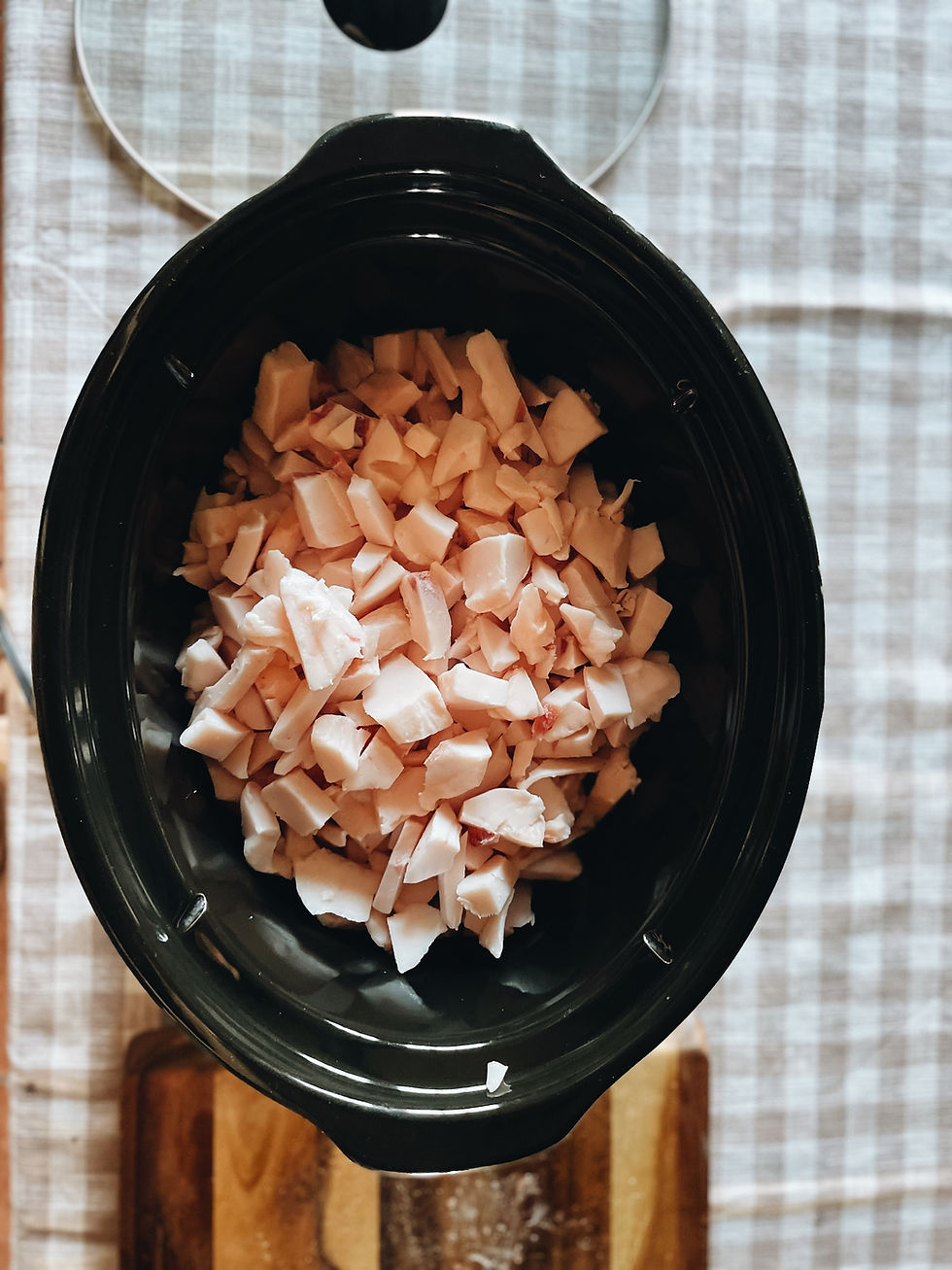The Burden and Gift of Knowing Our Food
- Heather Nerheim
- Jul 22, 2022
- 4 min read
Updated: Jul 14, 2023

At dawn they hopped right into the trailer without a second thought. Pete drove them 5 minutes down the road to the local USDA-inspected processor. A small, quiet, clean facility tucked away next to the river. The ladies there helped him unload. They helped him fill out the forms, customizing every cut of meat, promising to even try and figure out how to get rashers of British back bacon for us. Did we want the feet? Neck bones? Head? Skin? Tail? Yes, yes we want every bit. No part of them will be wasted. They graciously answered Pete’s many questions, knowing it was his first time, including the last one, “How do you do it?”
“We hug them to death.” She gave a half-hearted smile. “A bolt to the head.”
“What if you miss?”
“We don’t miss. It has to be one shot, it has to be instantaneous, otherwise the whole place would shut down.”
He handed her the forms and looked her in the eye, “thank my girls for me.”
Yesterday was a big milestone for our farm. We sent our first large animals off to the processor and in about a week we will have 450+ lbs of pasture-raised Mangalitsa pork and lard in the freezer. More than enough to sustain our family for an entire year. They were not pigs that we had initially intended to process. Cotton and Penny were supposed to be breeding sows, but after a year living with our boar and no piglets, we could see the writing on the wall. As a breed, Mangalitsas in the US can have fertility issues. The reason is because so few animals were originally imported to the US, so there is not a lot of genetic diversity. At the end of the day, with skyrocketing livestock feed prices and meat prices, this was the logical decision to make.
As I grappled with the emotions of sending off these two sows that we have raised up from piglets over the past 3 years, I also felt profound gratitude for the gift that they are giving our family. The gift of sustenance, of nutrient-dense food that was raised here, on our farm, on pasture, fresh air, and sunshine. The burden and the gift of knowing where that food came from.
We happen to live near a small Smithfield pork farm, so I am also acutely aware of the living situation of those industrially-raised animals. When we see their meat in the grocery store, we call it “sad pork.” I don’t want to eat sad pork from animals whose daily existence is a living nightmare. I cannot save them all from that existence, but what I can do is act as a living example of another way. A way to love animals and still consume them. The industrial mentality is to raise them as cheaply and conveniently as possible because, after all, they are “just food.” To lock them away in metal buildings where the consumer will not have to see the reality. The average consumer is happily ignorant when they pick up that plastic-wrapped pork loin sitting under the fluorescent grocery store lights. They were spared from the difficult emotions. And when they serve that roast, and most of it is left half-eaten on plates, they can casually toss it in the trash without a second thought. It has no value beyond the sticker price. But what if we understood that the most common and profound way that human beings engage with nature is through eating. What if we honored the animals that feed us, cared for them, and gave them their best life, while also knowing that they will one day be our nourishment. What if we took the time to develop a deep and sustainable relationship with our food? That is not to say that everyone should grow and raise their own meat and vegetables, you can also develop a relationship with your local, regenerative farmer.
Some people think the future of food is growing pork chops in a lab. I think the future of food is local. If we come to the point where scientists and robots are producing the bulk of our food in labs, we have truly lost. We have truly and completely disconnected from the natural world. We were born onto a planet that literally grows food, that even under the most impossible of circumstances strives to create life, and we are part of that food chain, that cycle, we, too, are nature. It is possible to get back to a place of connection to what we eat and where it came from.
As Michael Pollan says in The Omnivores Dilemma, “Imagine if we could eat every meal knowing these few simple things: What it is we’re eating. Where it came from. How it found its way to our table. And what it really cost. If that was the reality, then every meal would have the potential to be a perfect meal…Imagine it: Every meal would connect us to the joy of living and the wonder of nature. Every meal would be like saying grace.”
#pastureraised #pasturedpork #pastureraisedpork #mangalitsa #regenerative #farmlife #selfsufficient #selfsufficiency #slowfood #knowyourfarmer





Comments